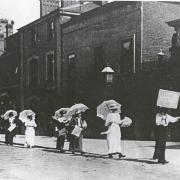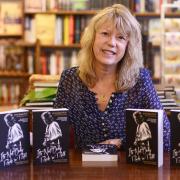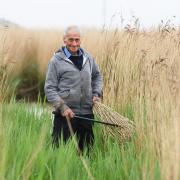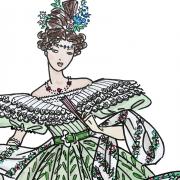Dota and Alan Williams’ passion shines through in the crafting of their cellos, violins and violas.

When she was 11-years-old, fledgling musician Dota Williams took her violin – and smashed it up.
But it wasn’t a fit of childish pique or frustration that led her to do it. Rather it was a desire to see if she would be able to mend it.
“I had got a bigger-sized violin, so I thought ‘oh well, I’ll just smash this one and try and fix it,” says Dota. “Obviously, I made a very bad job of it! I went about it all the wrong way...”
But the youngster was undeterred. She would visit the local luthier who looked after her instruments and was entranced. “His workshop was amazing, just magical, with lovely old tools and a really nice atmosphere.”

She asked if she could make a violin, got a Saturday job with him and from there a career as a luthier blossomed. She is now one half of Resonant Strings with her husband Alan, based in their home, a former chapel in Cawston.
They met at the Newark School of Violin Making and, after qualifying, went around the world, spending a spell in Dota’s home country of Australia, before returning to Norfolk.
Alan’s route into the craft was a little less dramatic than Dota’s, coming from a woodworking background, though he shared a similar epiphanic moment. “I went into a violin-making workshop in France, in Limoges, and when I walked in it seemed such a lovely environment. Some of the tools looked familiar, some didn’t, but I just thought ‘this is a lovely place.’”
Alan, who grew up in Reepham, eventually came back to Norfolk and worked with a maker in Melton Constable for a while before going to college.

Neither of them come from musical families and while Dota plays, Alan does not. “Dota has tried to give me lessons lots of times but it just...” he shrugs with a smile.
From their intimate workshop they build and repair violins, violas and cellos, using materials and methods which have changed little in four centuries.
The starting point for making a violin is a pair of roughly-shaped wooden blocks of French maple, called flitches. These are given the classic violin outline shape on a bandsaw – the only power tool used in the process – and then the luthiers painstakingly shape the panels of the instrument by hand, using gouges and scrapers to sculpt the timber down to a thickness of as little as 1.1mm.
“We use scrapers because If you use sandpaper it scuffs and abrades the surface and under the varnish it looks slightly dull,” says Alan. “If you scrape it then you get a much cleaner, fresher look.” It takes twice as long. “The whole process hasn’t changed in 400 years, really,” he says.

“We do have measuring devices like callipers,” says Dota, “but you start to feel it too, in your fingertips.”
How to go climbing in flat Norfolk

“You get to the point where you abandon the actual measurements and you just feel it and tap it and listen to it.” adds Alan.
Strips of wood – again taken down to the requisite thickness by hand – are steamed and bent to create the sides, while the neck and scroll blocks are carefully carved. To the unskilled eye the scroll looks fiendishly difficult to create.
“It looks complicated but, once you start doing it, it is actually quite methodical and simple. The key thing is to mark it out on a template and keep looking at it as you do it,” says Dota.
The choices of timber used in instrument making are critical. Maple, with its beautiful silvery figuring, is chosen for its appearance. Spruce is used for the front because it resonates so well and is very light and strong, while most of the fittings and fingerboard are ebony or sometimes boxwood.
Genuine horsehair is used for repairing bows, with the best coming from Mongolia at £600 for a hank, traditional glues hold everything together and varnishes are employed to give the all-important finishing touch.
The couple work as a complementary team, each bringing their individual talents to the process. “We’re both very different in what we like to do,” says Dota.
“I tend to do a lot of the donkey work!” says Alan. “I probably do more of the woodworking side of things, the joints and fitting the necks.”
“I’ll tend to do the final stuff,” says Dota, who also does a lot more of the restoration work.
They generally work on separate instruments but recently completed a joint project where the client specifically requested it. “He didn’t want to choose between us,” laughs Alan. “And I think he thought ‘I’ll get the best of both worlds!’”
They make some instruments for stock and others to order. When a client orders a violin they test it ‘in the white’, unfinished, so that adjustments can be made to suit individual needs.
Creating fine instruments is not without pressure. “It is rewarding, but it can be quite stressful,” says Alan, “because you’re wondering ‘will the customer like it?’”
It is a significant investment of time; it least six weeks of work to make a violin, and that is without including the time taken for the varnishing process.
It is a significant investment for the customer too; an instrument will cost several thousand pounds. But for something made with such skill and passion, something which should last for many, many years, it is a small price to pay.




























